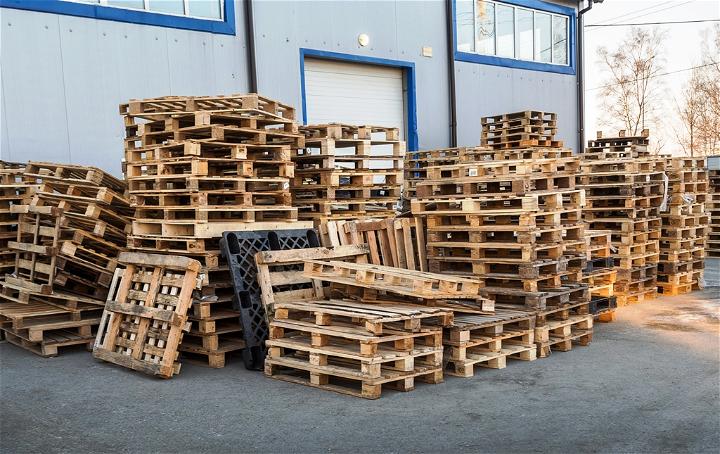Pallets are integral to many businesses and industries, from warehousing to manufacturing. They are used to transport and store goods and products and are a vital part of the logistics process.
For pallets to last for extended periods, it is essential to use the right tools and equipment to work with pallets. In this guide, we will discuss the vital tools for working with pallets and provide some tips for safety when using them.

Introduction to Pallets
Pallets are flat, rigid platforms that transport and store goods and products. They are made from various materials, such as wood, plastic, and metal, and come in multiple sizes and shapes.
Pallets are used in many industries, including manufacturing, warehousing, and logistics. They are also used in retail stores and supermarkets to transport goods from the warehouse to the shelves.
Pallets are an efficient and cost-effective way of transporting and storing goods and products. They are easy to move around with the help of the right tools and equipment, and they can be stacked to maximize space utilization.
For these reasons, pallets are increasingly being used in many industries.
Essential Tools for Working with Pallets
For working with pallets, it is essential to have the right tools and equipment. Different tools are required for various tasks, such as lifting, stacking, wrapping, and nailing.
Here, we will discuss the essential tools for working with pallets.
Pallet Jacks
Pallet jacks are tools used to move pallets around. They are wheeled devices with two forks that can be inserted underneath the pallet.
A handle is then used to lift the forks, which raises the pallet off the ground. The pallet can then be wheeled to a new location.
Pallet jacks are available in various sizes and load capacities, so it is essential to choose the right size and capacity for the job.
Pallet Trucks
Pallet trucks are similar to pallet jacks but are equipped with a motorized lift mechanism.
This makes them more suitable for moving heavier loads, as the motorized lift can handle up to 4,500 pounds.
Pallet trucks are available in various sizes, so choosing the right size and capacity for the job is essential.
Pallet Wrappers
Pallet wrappers are tools used to wrap and secure pallets. They are typically powered by electricity and consist of a wrapping arm and a wrapping mechanism.
The wrapping arm is used to wrap the pallet, and the wrapping mechanism is used to secure it. This helps to protect the pallets from damage and dirt during transportation.
Pallet Stretchers
Pallet stretchers are tools used to stretch and secure pallets. They are typically powered by electricity and consist of a stretching arm and a stretching mechanism.
The stretching arm is used to stretch the pallet, and the stretching mechanism is used to secure it. This helps to protect the pallets from damage and dirt during transportation.
Pallet Nailers
Pallet nailers are tools used to attach pallets. Electricity consists of a nail gun, and a nail magazine typically powers them.
The nail gun is used to shoot the nails into the pallet, and the nail magazine is used to hold the nails. This helps to ensure that the pallets are securely attached.
Pallet Racks
Pallet racks store pallets in a warehouse or other storage facility. They are typically made of metal and come in various sizes and shapes.
Pallet racks are used to store and organize pallets and can also be used to transport pallets.
Pallet Lifters
Pallet lifters are tools used to lift and move pallets. They are typically powered by electricity and consist of a lifting arm and a lifting mechanism.
The lifting arm is used to lift the pallet, and the lifting mechanism is used to secure it. This helps to protect the pallets from damage and dirt during transportation.
We would recommend you visit Data Power Tools to purchase different tools related to woodworking.
Safety Tips When Working With Pallets

When working with pallets, it is essential to take safety precautions to prevent injury and damage. Here are some tips to keep in mind:
- Always wear appropriate safety gear, such as gloves and safety glasses.
- Ensure that the tools and equipment you use are in good working condition.
- Place the pallets on a flat surface before lifting or moving them.
- Use proper lifting techniques to prevent injury.
- Do not overload the tools or equipment.
- Use the right size and capacity for the job.
- Make sure that the pallets are securely attached.
Conclusion
Working with pallets requires the right tools and equipment. In this guide, we have discussed the essential tools for working with pallets and provided some safety tips for working with them.
By following these tips, you can ensure that your pallets are handled safely and securely and last for extended periods.

